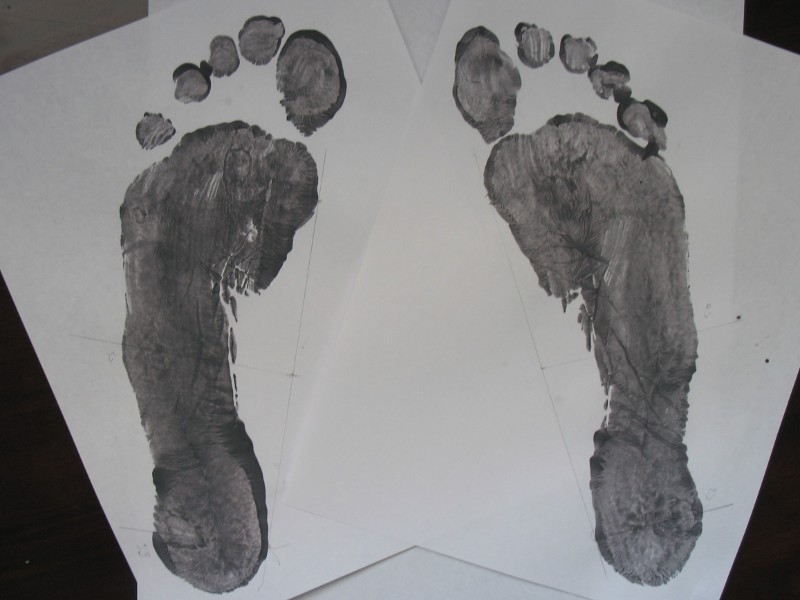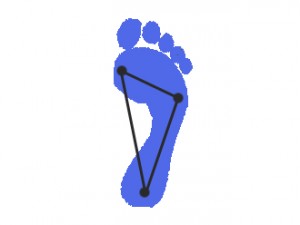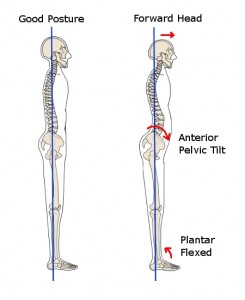Today both arches had index numbers below 1.0, the mark I originally set for considering them “not flat”. Both the left and the right were at 0.96 which means the left stayed the same as last week but the right continued to improve. Here is a picture of the footprints next to each other and they are starting to look identical.

One study I read reported the mean value for this arch index as somewhere between 0.6 and 0.7. Those researchers concluded that anything over 1.15 should be considered a flat foot. Well, I’m now safely in the normal arch category, but I still believe there is room for improvement. I’d like to try to get at least to the 0.8 mark.

I still know that while running or walking for long periods I have a tendency to pronate more as I get fatigued. The footprints above don’t really demonstrate that effect. I’ve also noticed excessive pronation continues with certain exercises like squats or plyometrics that involve a lot of knee flexion and I want to address those issues. Having low or flexible arches are not necessarily bad things. They are actually better for shock absorption than a high rigid arch. For relaxed standing, it is still preferable to have pressure distribution on the foot on the three main contact points. Though the arches should flex some during loading, they still need to return to that tripod shape for optimal functioning and alignment.
The last two weeks I’ve focused primarily on increasing ankle dorsiflexion mobility and almost have full range of motion now. I’ve given a lot of thought to what problem area to address next. There are several options:
- Posterior tibialis strengthening
- General ankle inversion and eversion strength
- Hip abductor and rotator strengthening
- Anterior pelvic tilt correction
All of the above have an effect on overpronation but I feel that at this point posture correction is a priority.

Working on fixing anterior pelvic tilt will help remove the forces above the hip forcing the lower leg into internal rotation which will ultimately make it a lot easier to maintain a better arch position. It will also allow me to work on some of the muscle imbalance problems I’ve been wanting to get to–like hip flexor stretching and abdominal strengthening.
I also know that in general, I need more hip strength and that should be partially addressed with the postural exercises. On a few of my last runs I noticed a dull pain on the outside of my right knee which I think is probably IT band irritation. I’ve had this before especially running longer distances and I’m guessing hip weakness has something to do with it so I look forward to finally taking care of that.
In the past, I used to have some patellofemoral pain in both knees with running but since working on arch strengthening and switching to the minimalist shoes that hasn’t bothered me at all.
